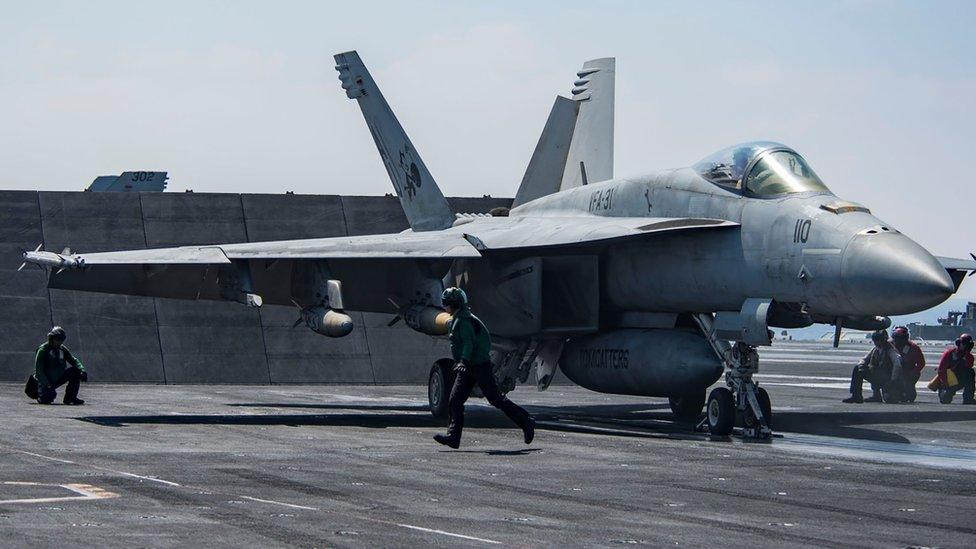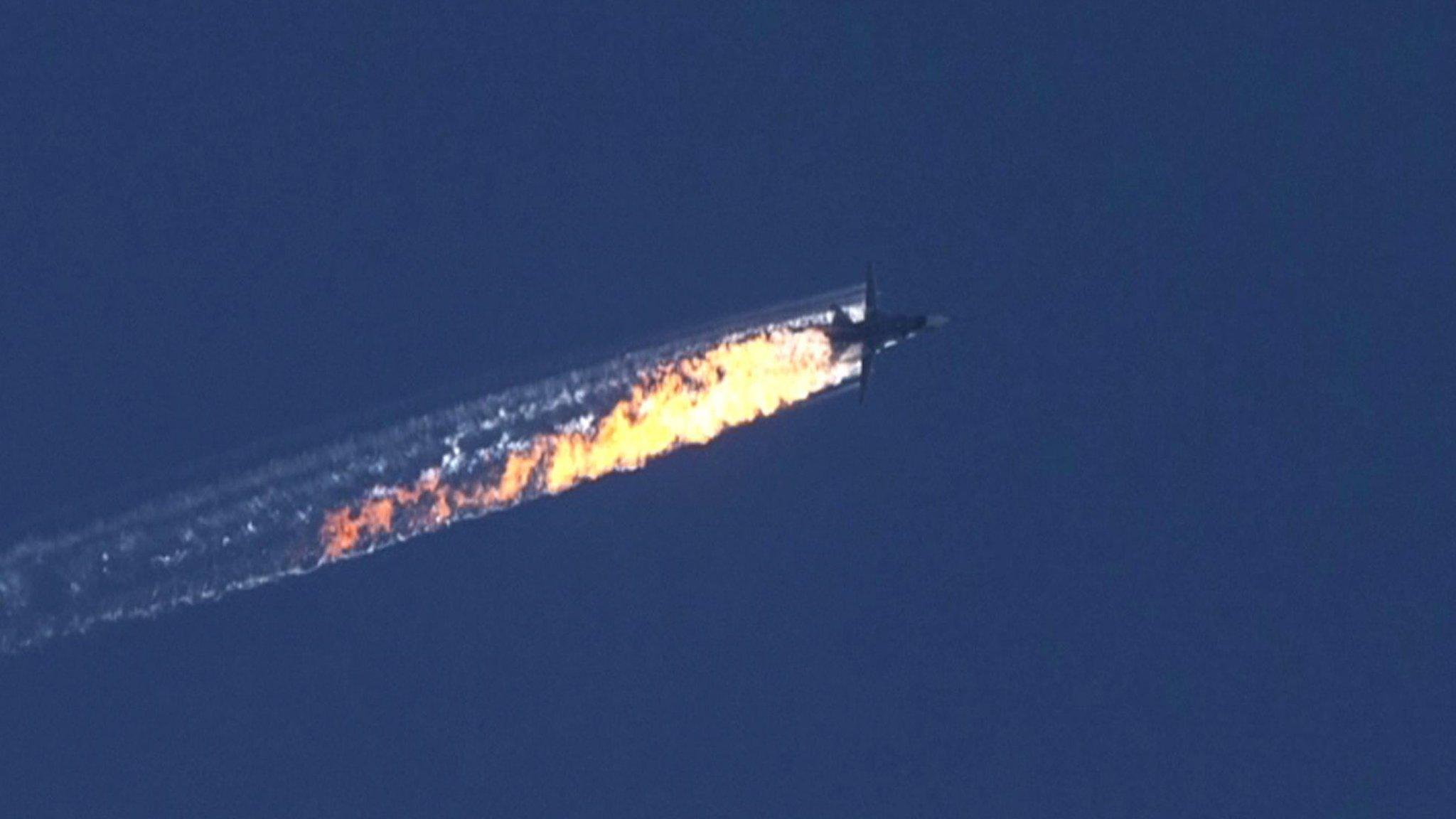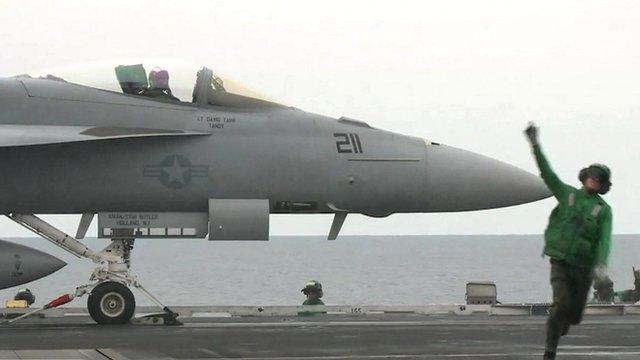Syria conflict: Why are air combat kills so rare?
- Published

A US air force F-15, none of which have ever been lost in combat
The shooting-down of a Syrian jet by the United States is believed to be the first air-to-air kill by a manned US aircraft since 1999.
Despite Hollywood blockbusters showcasing aerial dogfights, they have almost vanished from modern warfare.
In the 20th Century, skilled pilots who clocked up kills were often referred to as aces.
The US considers a pilot with at least five confirmed kills to be an ace - but no serving pilot holds the title.
What was the lesson of the Gulf wars?
A report published by the Center for Strategic and Budgetary Assessments (CSBA) in 2015 found just 59 kills since the 1990s - the large majority of which were in the First Gulf War.
Later that year, when Turkey shot down a Russian Su-24 plane along the Syrian border in a rare conflict, it sparked an international diplomatic row.
This video shows a plane falling to the ground on the Syrian border with Turkey
"The era of dogfighting is largely over," says Justin Bronk, a research fellow at the Royal United Services Institute, specialising in combat airpower.
"After the totally lopsided kill-to-loss ratio attained by the US Air Force and US Navy during the First Gulf War, it is a very rare thing for regimes under attack by the US and its allies to send fighters up in defence - since they know how it will end."
In that war in early 1991, Iraq lost 33 planes to coalition forces in air-to-air combat. In return, its planes shot down just one coalition F-18, according to the CSBA database.
That lesson led many countries to abandon competition with the US and its allies.
"Even in the latter stages of the First Gulf War, many Iraqi pilots chose to fly their aircraft to Iran to escape certain destruction - no light decision, soon after the brutal Iran-Iraq war," Bronk says.
During the Second Gulf War, Saddam Hussein "had most of his remaining air force buried underground to escape destruction rather than send fighters up".
And when Nato intervened in Libya in 2011 to aid the rebellion against Col Muammar Gaddafi, the country's air force did nothing to defend its airspace.
Why is the US so dominant?
Early air combat during World War One involved lining up an enemy aircraft in the plane's sights and firing machine guns at propeller-powered aircraft flying at relatively low speeds.
Despite technological advancements, the basic principle remained the same for half a century.
But in the modern era, the human eye was quickly replaced. From 1965-1969, guns accounted for 65% of air-to-air kills, the CSBA says.
But between 1990 and 2002, they accounted for just 5% of kills - with the rest carried out by some kind of missile.
"Modern air combat is almost entirely decided by situational awareness [from radar and other sensors] and missile technology," Bronk says. "All recent air-to-air kills between fast jets were one-sided, quick affairs."
Sharanjit Leyl reports from the aircraft carrier, the USS George Washington
Most kills in the last two decades have been against enemy planes too far away to see with the human eye - which means technology often trumps pilot skill.
That gives the US a clear advantage.
It spends more on military technology than any other nation, has more aircraft carriers and deploys specialist ships with sensor arrays to aid its aerial fleet.
Faced with such a prospect, many air forces choose not to engage a technologically superior force - and leave their planes to conduct patrols or attacks on ground targets.
- Published19 June 2017

- Published1 December 2015

- Published25 October 2013
